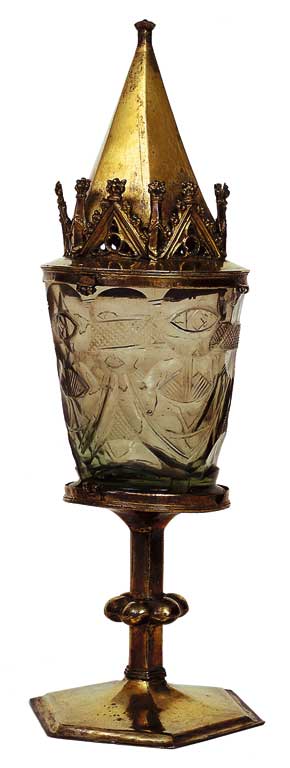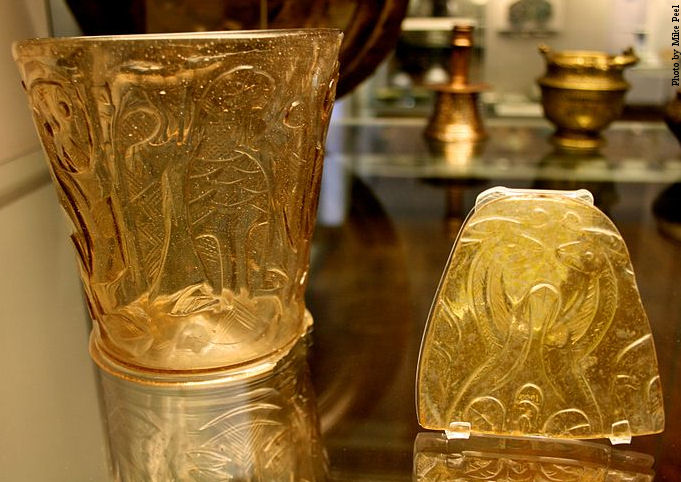
Hedwig glass beaker in the British Museum. On the right is a carving of an eagle and on the left is the start of a carved lion.
Known as Hedwigsgläser (Hedwig glasses) or Hedwigsbecher (Hedwig beakers) these priceless medieval treasures are named after the Silesian princess Saint Hedwig (1174-1245) who is said to have owned three of them. They were symbols of lofty social rank and were greatly prized in the Middle Ages. Only fourteen of them have survived.
Scholars debate the origins of this ancient glassware, with some pointing to the Middle East, others, to the Norman kingdom of Sicily.

Hedwig Glass reliquary, 12th century, stetting from Lower Saxony, 14th century from the Cathedral Treasury of Halberstadt.
A 1353 manuscript from the court of Duke Ludwig I of Liegnitz and Brieg tells the story of how her husband, Duke Henry I “the Bearded,” disliked her ascetic practices, including the fact that she only drank water. Resolved to change her ways, the Duke took her cup as they were dining, and when he tasted it he was greatly astonished to see that the contents had been changed into wine. After Saint Hedwig’s death, her beakers were seen as miraculous.
During the Middle Ages, some of the Hedwig glasses were crafted into reliquaries, and one of them was made into a chalice, with an added gold base.







